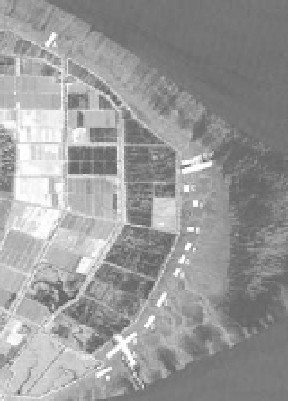Environmental Engineering Reference
In-Depth Information
levees constructed in 2001 to separate the land from water (right). The development of agriculture has
caused reduction in wetland area and number of wild animals.
(a) (b)
Fig. 1.38
(a) Agricultural development from the wetland in the East Chongming Shore in the Yangtze River mouth
in several phases; (b) The levees constructed in 2001 to separate the land from water (right)
There are also examples of ecological protection in China. Figure 1.39 shows the wood path in the
Jiuzhai Creek in Sichuan in west China. The creek has become well known in its beautiful landscape and
attracted more than 2 million visitors every year. The managers have done a great effort to protect the
environment and ecology. The wood trails lead to all tourism attractions in the park. The river water is only
for drinking-use. The natural ecology is well protected although it receives millions of visitors every year.
Fig. 1.39
The wood path for visitors in the Jiuzhai Creek (Sichuan basin in the western China) to protect the
environment and ecology
The river management is not integrated. Most of dams are operated to achieve the highest power
generation without consideration of stream ecology. And the managers of water resources just meet the
water demands and take no consideration of fluvial process. Sediment transportation in rivers causes many
problems, such as the reservoir sedimentation, flood stage rising, and impairment of stream ecology. But
sediment is a resources for land creation in river mouth and the main factor to maintain coastal equilibrium.








Search WWH ::

Custom Search